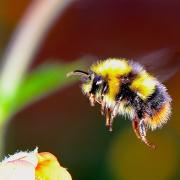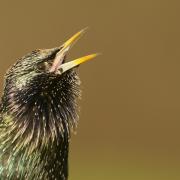Jon Traill, East Living Landscapes manager for Yorkshire Wildlife Trust, helps us identify our adders from our grass snakes

GRASS SNAKE
Natrix helvetica
Once thought to be a sub-species of the European grass snake, recent DNA work has shown that the British grass snake is genetically isolated and so it has been given its own name – the barred grass snake, due to its distinctive yellow collar.
It is our largest native snake, with females measuring up to 120cm (4ft) in length. This may sound very long, but compared to the South American green anaconda (the longest snake in the world measuring up to 18ft), they still measure up quite stumpy!
Grass snakes mainly feed on frogs and other amphibians, small mammals, birds and birds’ eggs. Although they do have fangs to catch prey, they are not poisonous. They prefer to hunt in early morning and can hunt both on land and in water, as they are good swimmers and are often found in wetlands, ponds, damp woodlands and heath. Their olive colour with black dots makes them easily camouflaged and hard to spot in the grass.
The grass snake is the only British snake to lay its eggs in a place where heat is generated such as a compost heap or haystack. Hundreds of eggs can be laid and several females can search out the same nest site in early June, with young hatching out in August or September. Young snakes race to fatten up before hibernation begins from October, when adults search for a suitable place under a log pile, in tree roots or other dark secluded places.
Foxes, badgers, owls and kestrels will all hunt grass snakes, but they can live in the wild to over 10 years. During their life grass snakes can shed their skin many times as they grow, with up to 3 to 10 ‘moults’ a year, called sloughing. Whilst sloughing, the skin becomes dark and the eye mists over.

ADDER
Vipera berus
The adder is the UK’s only venomous snake and is also known as the viper. It is most commonly found on peatlands, lowland heathland (wild, moorland landscapes where heathers, gorse and grasses grow) and even along the coast in sand dunes and amongst coastal woodland.
Adders are much smaller than the grass snake, only measuring up to around 60cm (2 ft) in length. They have a dull mottled colour making them difficult to spot amongst vegetation, twigs and stones, but their continuous, dark zig-zag stripe down the back is a tell-tale marking. They feed on similar prey to the grass snake, but as they are venomous they poison their prey using fangs that hinge downwards from the roof of their mouth.
Unlike the grass snake, adders give birth to live young. Mating takes place in early spring and this can be a good time to spot them, as they are more active and can be seen together. Females typically give birth to between 6 and 20 young around August.
Adders also need to slough their skin like grass snakes, and can do this throughout the spring and summer months before hibernating from late autumn into the winter. Adults can live up to 20 years but are preyed upon by a wide range of other animals. But their biggest threat is loss and fragmentation of suitable habitat, with many areas of lowland heathland lost over the last 100 years.

























